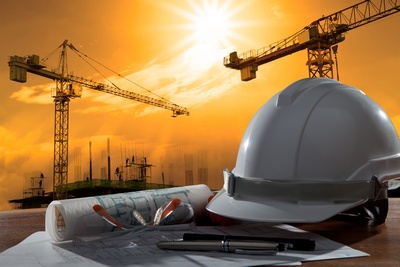
By Michael Barnes
Ensuring that workers on a construction site are staying safe and responsible can be an overwhelming task for everyone involved. At any given time, there are numerous high-risk tasks being performed and it can be easy to overlook simple precautions that could prevent serious or even fatal injuries. Some examples of common risks that deserve ample recognition and attention include fall, struck-by, electrical and fire hazards. While protective gear is certainly important, the real challenge is in finding ways to go “beyond the gear” to eliminate these types of hazards, and more. There are three simple, but important, steps to creating a safer work environment on any jobsite: practice better communication, emphasize accountability and encourage teamwork.
Communication is key
While on the clock and working hard to complete a job, it’s important to take the time to plan and communicate safety protocols at the beginning of each day. By pinpointing specific hazards, workers will have a detailed plan to work by throughout the day. For example, discuss how fall hazards can happen at all heights – tall and short distances – and how to handle fall risks that may be below the standard threshold for protection. Refresh employees on how to use safety equipment correctly and enforce the use of this equipment at all times, because even taking off a hard had for a brief moment could result in a major accident.
It’s also important to communicate the importance of preparing for risks in advance. Think about questions such as: what will this specific job entail, what kind of equipment will be used at various stages of the project and what kinds of situations will workers be put in to complete their tasks. Anticipating obstacles, such as buried electrical lines, can have a major impact on safety. Reach out to local utility companies before the job begins to identify and plan ways to work around these lines and ensure workers are aware well in advance.
These types of conversations invite workers to think about job safety at a deeper level and challenge their day-to-day operations. Additionally, in order for any safety dialogue to have a lasting effect, companies should consider using multiple forms of communication and creative tactics for delivering key points on a consistent basis. Whether it’s having pocket safety guides for every worker to have for quick reference, a handout card explaining the different warning flags that might appear on a construction site or a life-sized poster that models a worker in the required personal protective equipment – make communication a tangible concept for workers to grasp and understand.
Don’t shy away from accountability
While it can be intimidating to hold others accountable, it is a necessity when safety is in question. Onsite workers are the first defense against safety hazards and, therefore, everyone is accountable for the actions they take on a construction site.
In fact, nearly every decision a worker makes on a construction site has the potential to harm themselves, other workers or property onsite. For instance, workers can be struck by heavy equipment and vehicles, as well as falling or flying objects. Staying alert, avoiding tasks underneath suspended loads and wearing personal protective equipment is critical. Companies should take responsibility for implementing industry best practices, such as tool tethering to prevent workers from dropping tools or materials on those passing by.
Superintendents are accountable for ensuring workers receive proper training before starting a project, too. For example, damaged cords and tools are not always easy to spot, so it is essential that workers are trained beforehand to understand the risks associated with electrical equipment. While people plug things into outlets every day of their lives, they don’t always think about the dangers of the cords, outlets and tools themselves.
A more general way to keep workers accountable is to question how meticulously they complete their tasks. Sometimes workers focus on working quickly, rather than safely, so it’s important to warn against making rash decisions and to emphasize how slowing down is a simple way to help eliminate hazards. For example, workers may use an engine until it runs out of gas, and then quickly refill it without waiting for the machine to cool down. Something this seemingly insignificant could cause a fire.
Most importantly, provide workers with positive reinforcement for taking safety seriously. Have raffles, giveaways or some form of recognition for workers taking care of both their personal and team’s well-being.
Safety is a team effort
Finally, everyone on a construction site should look out for each other and “be your brother or sister’s keeper.” This means workers should be cognizant of the work being done around them and speak up when they see someone working in an unsafe condition. Superintendents should diligently keep an eye on the construction site and its workers, paying close attention to new employees to ensure they are following proper safety and equipment guidelines.
Overall, construction safety is a team effort, from opening the lines of communication and holding each other accountable to observing one another’s actions. Therefore, safety can be a team-bonding exercise that doesn’t have to be concerning. In fact, if everyone plays their part, it can be a very positive and rewarding conversation.
Michael Barnes is the safety director for Hoar Construction’s Florida division. He holds a Certified Safety Professional credential from the Board of Certified Safety Professionals and has supervised a variety of projects in mixed-use retail, hospitality and major theme parks in Orlando.


 Join our thriving community of 70,000+ superintendents and trade professionals on LinkedIn!
Join our thriving community of 70,000+ superintendents and trade professionals on LinkedIn! Search our job board for your next opportunity, or post an opening within your company.
Search our job board for your next opportunity, or post an opening within your company. Subscribe to our monthly
Construction Superintendent eNewsletter and stay current.
Subscribe to our monthly
Construction Superintendent eNewsletter and stay current.